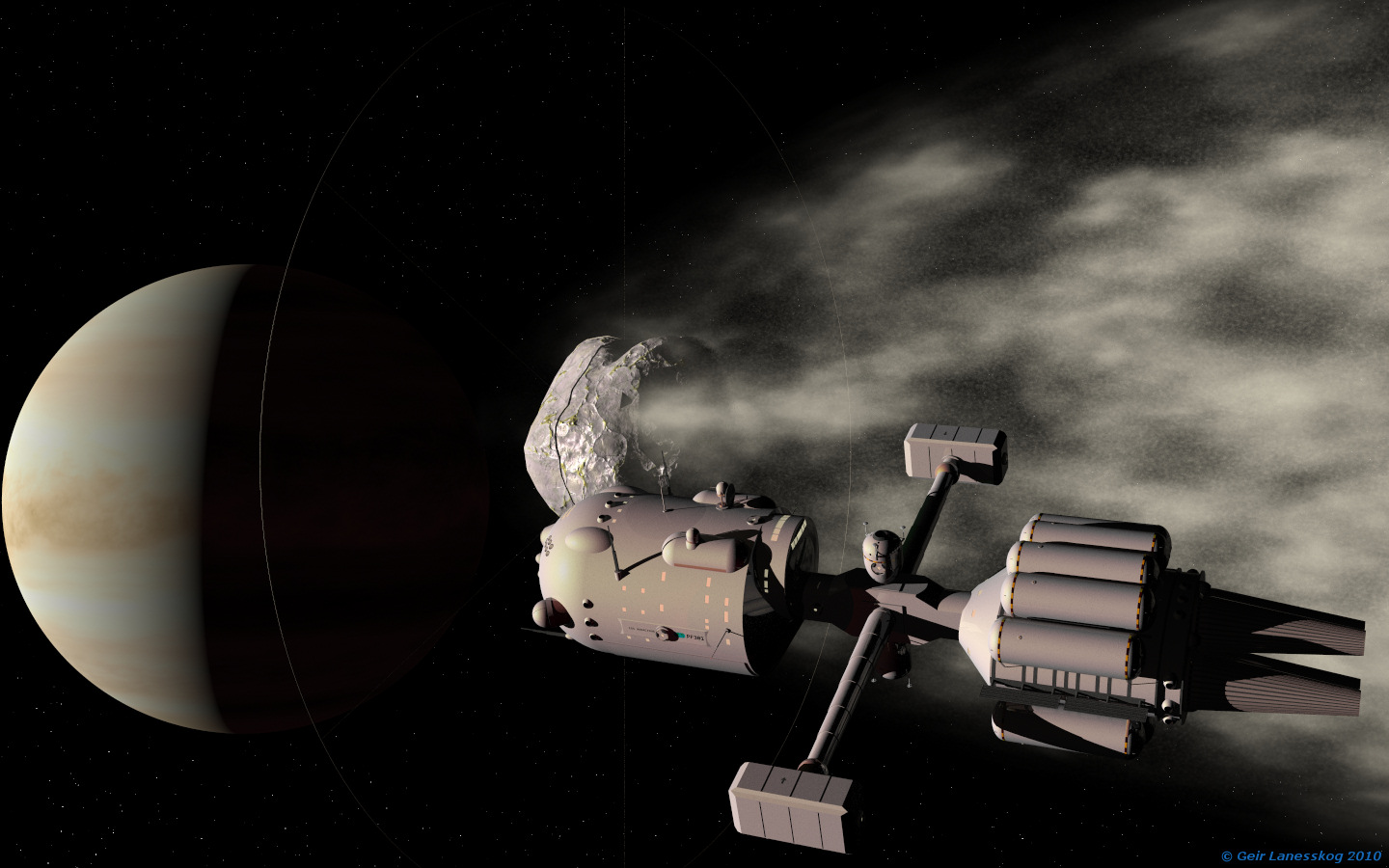
Final Approach
Project Genesis was one of two Grand Schemes To Avoid Extinction
that came out of the aftermath of the Last World War. As you
know, the other, Project Exodus, involved interstellar colonization.
After the fifth Cityship departed Vesta in 2102, that project shut down.
Though crossing interstellar distances took decades, Project Genesis had
a longer outlook: the time required to make another world habitable.
Project Genesis considered the two likely candidates: Mars and
Venus. Though Mars was the sentimental favorite, it had some
serious drawbacks. First, Mars was small.
It would never again have a global magnetic field, and that would cause any
created atmosphere to erode under the pressure of the solar wind.
Plus radiation would remain high, even after the development of an ozone
layer. Second, Mars lacked nitrogen. This
meant that any atmosphere would be nearly pure oxygen. Not
only was combustion too easy, but it also prevented the normal functioning of
many microbial biological processes. Third, Mars already had
settlements. Over a thousand people inhabited Mars by the
time of the War, and an asteroidal bombardment would force their evacuation.
And finally, Mars also had native life. It was
primitive, microbial and subterranean, but decades of positive press made the
"Extinction of the Martians" akin to genocide.
Of course, the Martian colonists eventually overcame these
objections. They carefully dropped the fragments of a few
dozen ammonia-rich planetoids onto the world to add nitrogen.
They developed medical procedures that limited radiation damage.
And as for those native Martians, well, they were related to Earth
organisms after all, and the discovery of other related life at Europa and
Titan, even deep in the cracks of Enceladus, limited the outcry against killing
off a few Martian bugs. Besides, Venus also had living
organisms in its high sulfur clouds, but Project Genesis bureaucrats buried
those reports in obscuria.
Project Genesis began with the bombardment of Venus by water-rich
planetoids. These rocks achieved three effects.
First, they added water vapor to the parched world.
Second, their carefully aimed impacts imparted a faster rotation to the
planet. And third, they blew away portions of the dense
carbon-dioxide atmosphere. Ironically, in the short term, the
energy of the impacts actually increased the hellish surface temperatures of the
world.
Impacts started with ten-kilometer scale comets and Outer
Belt/Jovian Trojan bodies. Drone mining platform landed on
their chosen targets, deployed robots, and started the construction of large
magnetic sails. Powered by the drones' giant fusion reactors
and fueled by planetoid ice, the sails slowed the planetoids' orbit and steered
them on collision course with Venus. On final approach, the
drones would detach and with magnetic sails, begin journeys out to the next
targets.
Later in the century, the first Kuiper bodies began to rain down on Venus.
The power of those fifty to eighty-kilometer scale bodies was two to
three orders of magnitude greater than the earlier collisions.
The impacts were visible from Earth in the daytime.
And ironically, though few dared whisper it, these were also Extinction Level
events.
--Excerpt from Prince Cleon Farrar's open remarks at the
Terraformation Studies Special Conference, August 2858.
All pages and images ©1999 - 2010
by Geir Lanesskog, All Rights Reserved
Usage Policy




![]()